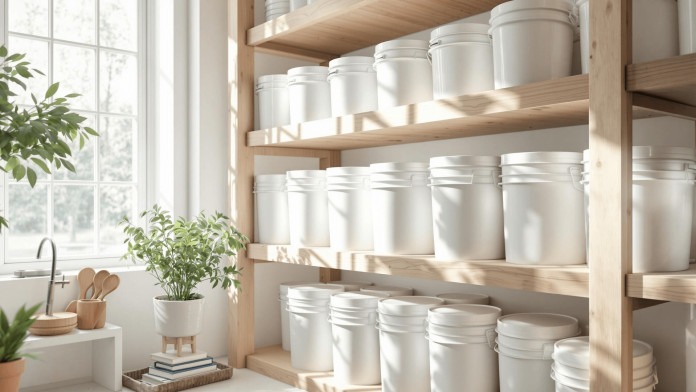Practical Preparedness Through Bulk Stockpiling
In uncertain times, one of the smartest and most empowering moves you can make is to prepare your household with an abundant supply of essential dry goods. This isn’t about fear—it’s about freedom. It’s about building a sustainable reserve of food that gives you peace of mind, saves money, and strengthens your self-reliance.
Whether you’re trying to cut grocery bills, prepare for emergencies, or simply build smarter habits, the bulk-buy-and-rotate method is your path to preparation with abundance.
The Power of Dry Goods in Bulk
Dry goods are shelf-stable, versatile, and affordable—making them the foundation of any long-term food storage plan. When you buy them in bulk, the cost per pound drops significantly, and your kitchen becomes a mini-warehouse of security.
Here are staples worth stocking:
- Flour – essential for bread, pancakes, baking, and thickening.
- Beans – high in protein, fiber, and variety; a must for nutrition.
- Rice – filling, adaptable, and stores for years if kept dry.
- Lentils – quick to cook and nutrient-dense.
- Sugar – long shelf life and critical for baking, preserving, and energy.
- Salt – not just a flavor enhancer but vital for survival and preservation.
- Oats, pasta, cornmeal, dry peas, baking powder, and oil – all excellent additions for a well-rounded bulk pantry.
The Rotation Method: Eat What You Store, Store What You Eat
The key to making bulk preparedness work long-term is rotation. Don’t just store food and forget about it—use it. Incorporate your bulk goods into your everyday meals. As you consume from your stockpile, replenish it consistently.
The 6-Month Replenish Cycle:
- Secure a 12-month supply of dry goods based on your household’s consumption.
- At the 6-month mark, assess your supply. Reorder what you’ve used.
- This ensures nothing sits too long, and your stock always stays fresh.
When you rotate properly, you’re not “prepping”—you’re just shopping smart and staying ready.
Saving Money with Smart Storage
Bulk buying slashes costs compared to small grocery runs. Here’s how the savings stack up:
- A 25 lb bag of rice costs less per serving than a boxed mix.
- Buying beans in 20 lb bags cuts your price down to pennies per protein-packed serving.
- Flour and sugar in 50 lb sacks can last months and cost far less than small bags bought weekly.
By committing to long-term purchases, you’re avoiding the inflationary spikes, supply chain hiccups, and panic-buying chaos that drain wallets.
Tips for Storing Your Stockpile
- Use food-grade buckets or Mylar bags with oxygen absorbers to extend shelf life.
- Store in cool, dry, dark areas to prevent spoilage and pests.
- Label with purchase dates to keep track of rotation.
- Keep commonly used items in smaller containers in your kitchen for daily access.
Preparing with Abundance, Not Scarcity
Too often, conversations around preparedness are rooted in fear. But this strategy is about abundance. It’s about knowing you have what you need, feeding your family with confidence, and never running out of the essentials.
With every restock, you’re reinforcing a habit of abundance. You’re protecting yourself from price hikes, shortages, and uncertainty—and you’re doing it all while spending less.
Final Thought: Saving money and preparing with abundance is not just a strategy—it’s a mindset. By stocking dry foods in bulk, rotating wisely, and shopping smart, you create a cushion of security and a life of quiet confidence.
Start today. One bag at a time.


